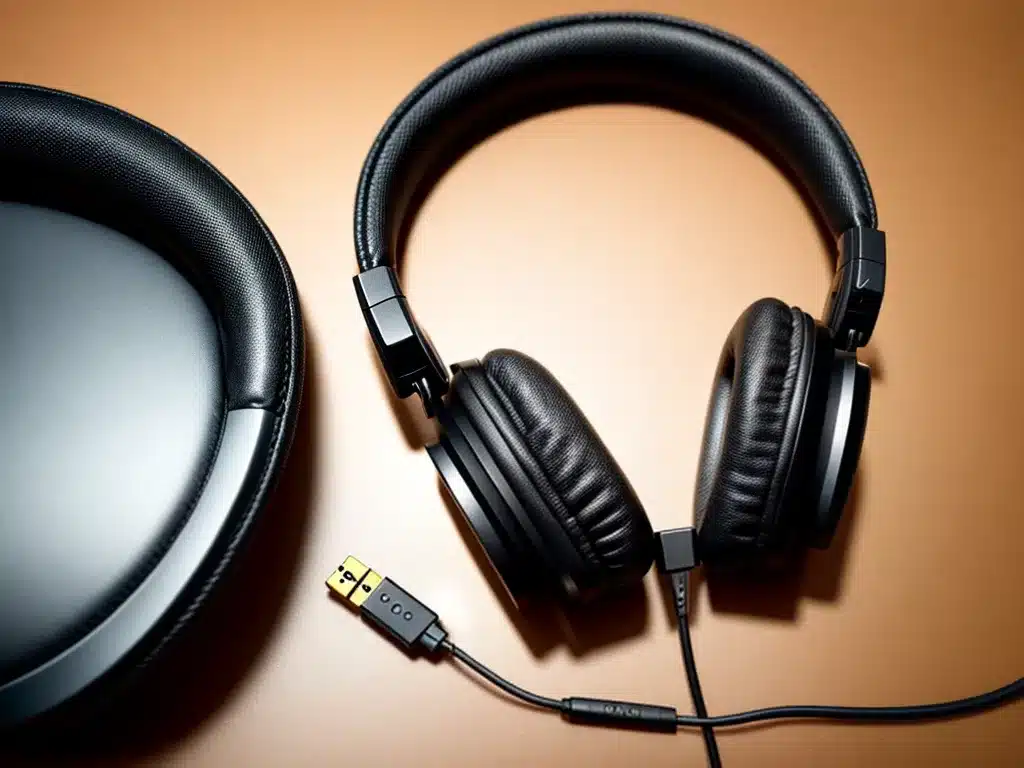Having issues with no sound coming from your headphones or speakers can be incredibly frustrating. However, there are several troubleshooting steps you can try to diagnose and resolve the problem. In this comprehensive guide, I will walk you through all the potential causes and solutions to try when you’ve got no audio from your headphones or speakers.
Diagnose the Issue
The first step is to properly diagnose where the audio issue lies. This will help narrow down the culprit and solution.
Check Your Hardware
-
Make sure your headphones or speakers are plugged in properly. Use the correct port and ensure the connection is snug. Loose plugs can cause no audio.
-
Check the cables for damage. Frayed cords or bent pins won’t transmit sound properly. Try swapping out the cable.
-
Test your headphones/speakers on another device. Plug them into a phone, tablet, or another computer. If you get audio there, the problem is with your PC.
-
Inspect the headphone jack and port. Look for dust, debris, and damage. Clean out any lint or gunk with compressed air.
Verify Sound Settings
-
Check the volume levels in Windows. Open the volume mixer and confirm nothing is muted or set to 0. Try increasing the volume.
-
Make sure your audio drivers are up to date. Out of date drivers can cause compatibility issues. Search for new drivers from your hardware manufacturer.
-
Toggle off any enabled sound enhancements. Spatial sound and other effects can sometimes interfere with basic audio.
-
Change the default playback device. Your PC may be trying to output to the wrong speakers or headphones.
-
Test speakers/headphones with multiple applications. No audio from media players but working in games points to an app-specific issue.
Resolve the Problem
Once you’ve diagnosed the potential cause, it’s time to implement the proper fix. Try each of these solutions one-by-one until your audio is working again.
Fix Connectivity and Hardware Issues
-
Securely reseat connections. Unplug then firmly plug back in headphones, speakers, and both ends of each cable.
-
Try different ports. Use the front or rear audio jacks if available. Test USB-C, optical, and Bluetooth connections too.
-
Replace worn cables and adapters. malfunctioning wires are a common culprit of no audio.
-
Update or reinstall audio drivers. Remove old versions completely using Display Driver Uninstaller then install the latest drivers.
-
Check for blocked ports. Carefully clean out headphone jacks and ports with compressed air.
-
Enable audio devices in BIOS. Disabled onboard sound and expansion cards won’t produce audio until re-enabled.
Adjust Software Settings
-
Unmute all audio channels. Having mute enabled anywhere prevents sound. Unmute devices in Volume Mixer.
-
Set applications to correct playback device. If improper default output is set, change to proper speakers/headphones.
-
Disable audio enhancements. Turn off surround sound, EQs, voice clarity, and other effects.
-
Update Windows and application audio components. Old codecs and sound files can cause conflicts.
-
Change sample rates/bit depths if proper values aren’t supported. Incompatible settings cause issues.
-
Reinstall or update audio drivers. Remove all traces of old versions before installing latest drivers.
-
Adjust app volumes. Balance relative app volumes so one isn’t drowning out others.
Fix Potential App and OS Issues
-
Restart computer and apps. Rebooting flushes out bugs, resets components, and reloads configurations.
-
Check Window’s default format. Unsupported formats like Dolby Atmos can cause no audio. Change to 16 or 24 bit 48000 Hz.
-
Remove recently added devices, drivers. New components could be creating conflicts.
-
Check audio services. Enable Windows Audio, Windows Audio Endpoint Builder, etc.
-
Test in Safe Mode. Hardware/software conflicts are disabled in Safe Mode. Audio working confirms an app or driver issue.
-
Restore Windows to resolve corrupted system files. Back up data first.
-
Reset application preferences. Clears out bad config causing no audio.
Prevent Future Audio Issues
Once resolved, there are some steps you can take to avoid more no audio problems down the road:
- Don’t force plugs into ports; connect securely.
- Avoid bending and kinking cables.
- Keep ports and jacks clean and dust-free.
- Update audio drivers promptly.
- Don’t adjust advanced sound settings unnecessarily.
- Don’t overload USB ports with too many devices.
- Keep Windows and apps updated.
- Use quality cables and adapters designed for your hardware.
Troubleshooting and fixing no audio from headphones or speakers doesn’t need to be a painful process. Follow this guide, stay calm and methodical in your testing, and you should be able to get your sound back quickly. Let me know in the comments if any of these tips resolved your particular no audio issue!













